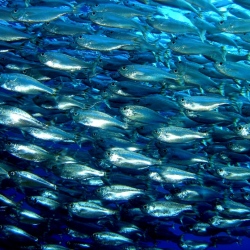
Rapid population growth as well as the agriculture, industry and pollution that goes with it has put huge pressure on our planet’s freshwater resources. Fresh drinking water is a luxury in many parts of the world.
One of the most promising solutions to this problem is desalination–the removal of salts from seawater to produce fresh water. This has never been widely used because it is hugely energy intensive and inefficient.
Conventional desalination plants that rely on reverse osmosis require a massive 1.5 kiloWatt-hours of electricity to produce 1 tonne of freshwater. Clearly a better approach is needed.
Today, Wanlin Guo and friends at Nanjing University of Aeronautics and Astronautics in China say they have identified just such a better way. The new technique involves a material known as graphyne, a two-dimensional sheet of carbon atoms connected together much like graphene but with an altered structure because of double and triple bonds in certain places.
Graphyne is interesting because these double and triple bonds create holes between the carbon atoms that are large enough for water molecules to pass through. However, these holes are not big enough for sodium and chloride ions, which are larger because they attract a shell of water molecules since they are charged.
Graphyne can form in several configurations known as α-graphyne, β-graphyne, graphyne-3 and so on. Wanlin and co have created a computer simulation of the way that these membranes allow water molecules to pass through while sieving the various types of ions found in seawater.
Their conclusions are promising. They say that while water molecules can move freely back and forth through the holes in graphyne, none of the ions they simulated could pass through at all.
